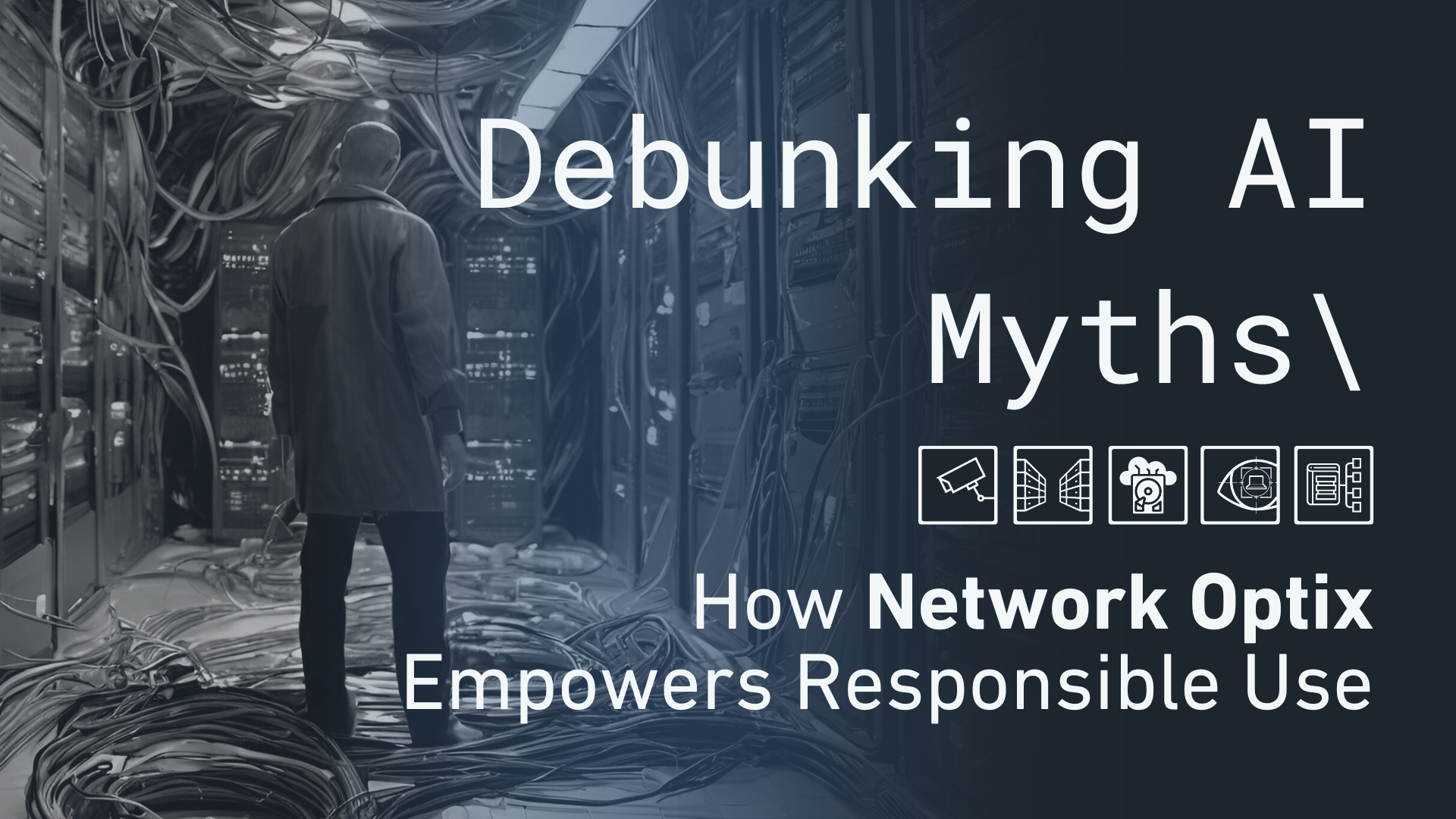Debunking AI Myths: How Network Optix Empowers Responsible Use
Artificial intelligence is one of the most transformative technologies of our time, but it's often misunderstood. Misconceptions about AI’s capabilities, its regulations, and how companies like Network Optix integrate it into their offerings can create confusion. In this article, we’ll address some of the most common myths about AI, clarify the facts, and explain how Network Optix empowers users to harness AI responsibly through its innovative software solutions.
Fact: AI has the potential to automate certain tasks, but it is unlikely to replace all jobs. AI excels at handling specific, repetitive tasks that can be easily defined by algorithms. However, jobs that involve creativity, critical thinking, and complex decision-making are far less likely to be automated. In fact, rather than eliminating jobs, AI is transforming the nature of work, leading to the emergence of new roles that didn’t exist before. Just as we shifted from individually handcrafting products to using assembly lines, the jobs evolved, but the need for human intervention remained.
Network Optix’s Role: Network Optix offers an extensive suite of tools via the Nx Toolkit, including Nx AI Manager, a new feature in the upcoming Gen 6 release that allow users to integrate AI models into their workflows, enhancing job efficiency rather than making jobs obsolete. By enabling developers to add AI functionality directly to their systems and providing a library of different integrations through the Nx Integrations Marketplace, Network Optix helps organizations optimize their operations while keeping human oversight central to the process.
Myth #2: AI Systems Are Completely Autonomous and Require No Human Oversight
Fact: AI systems, especially those used in critical applications, still require careful human oversight to ensure they operate correctly and ethically. Think of them as an extra pair of eyes and ears rather than a complete replacement. While AI can process vast amounts of data rapidly, it still requires guidance on interpreting that data and making decisions. AI is designed to assist, not replace, human judgment.
Network Optix’s Role: Network Optix’s platforms, such as Nx Witness VMS and Nx EVOS, are designed to provide support to human operators by providing intelligent insights while still ensuring that actual control and decision-making remain with the user. These platforms empower users to manage AI-driven analytics effectively, combining the speed and accuracy of AI with the critical oversight of human operators.
Myth #3: AI Can Predict the Future with Complete Accuracy
Fact: AI can analyze historical data and identify patterns to suggest future trends, but it cannot predict the future with complete accuracy. AI predictions are based on probabilities and are only as good as the data and algorithms that use them. Unforeseen events and changes in behavior can significantly impact the accuracy of AI predictions.
Network Optix’s Role: Network Optix’s provides software like Nx EVOS that allow users to integrate AI tools into their workflow. While these may offer predictive insights based on video data, they also emphasize he importance of understanding these limitations. The platform helps users incorporate AI insights into a broader decision-making framework, recognizing that no prediction is infallible.
Myth #4: AI Is Unregulated and Operates in a Legal Gray Area
Fact: AI is subject to a growing body of regulations and standards designed to ensure its ethical and responsible use. Different countries and regions have enacted laws governing AI, particularly in areas like data privacy, security, and accountability. These regulations are intended to protect users and ensure that AI is developed and deployed in a way that aligns with societal values.
Network Optix’s Role: While Network Optix does not develop AI itself, it provides tools like Nx AI Manager that help users implement AI while remaining in compliance with relevant laws and standards. Network Optix ensures that its platforms support users in maintaining data privacy and security, adhering to regulations such as the General Data Protection Regulation, or GDPR, in Europe and other applicable laws globally.
Myth #5: AI Is Inherently Biased and Unfair
Fact: AI can reflect biases present in the data it’s trained on, but it itself is not inherently biased. Bias in AI results from either biased data or flawed algorithms. Addressing this requires careful data selection, ongoing monitoring, and adjustments to ensure fairness. Reducing bias is a major focus in the field, with researchers and developers continually working to improve the fairness and accuracy of AI systems.
Network Optix’s Role: Network Optix’s software platforms allow users to incorporate different AI solutions while giving them the control needed to monitor and adjust these systems as necessary. By providing tools that enable transparency and oversight, Network Optix empowers users to address potential biases in AI applications and ensure that AI-driven insights are fair and reliable.
Conclusion
AI is a powerful tool with the potential to revolutionize many industries, but it’s essential to understand its capabilities and limitations. By debunking some common myths and providing a clear understanding of how AI works, we can better appreciate its potential. Network Optix will continue to offer software solutions that help users integrate AI responsibly, ensuring compliance with regulations and maintaining direct human oversight. As AI continues to evolve, Network Optix will remain a trusted partner, providing the tools necessary to leverage AI’s potential while navigating its challenges.
Looking to enhance your Nx solution with AI capabilities? Reach out to your local Nx sales representative or send us a message here and we'll help you get started with the Nx AI Manager as soon as possible.


